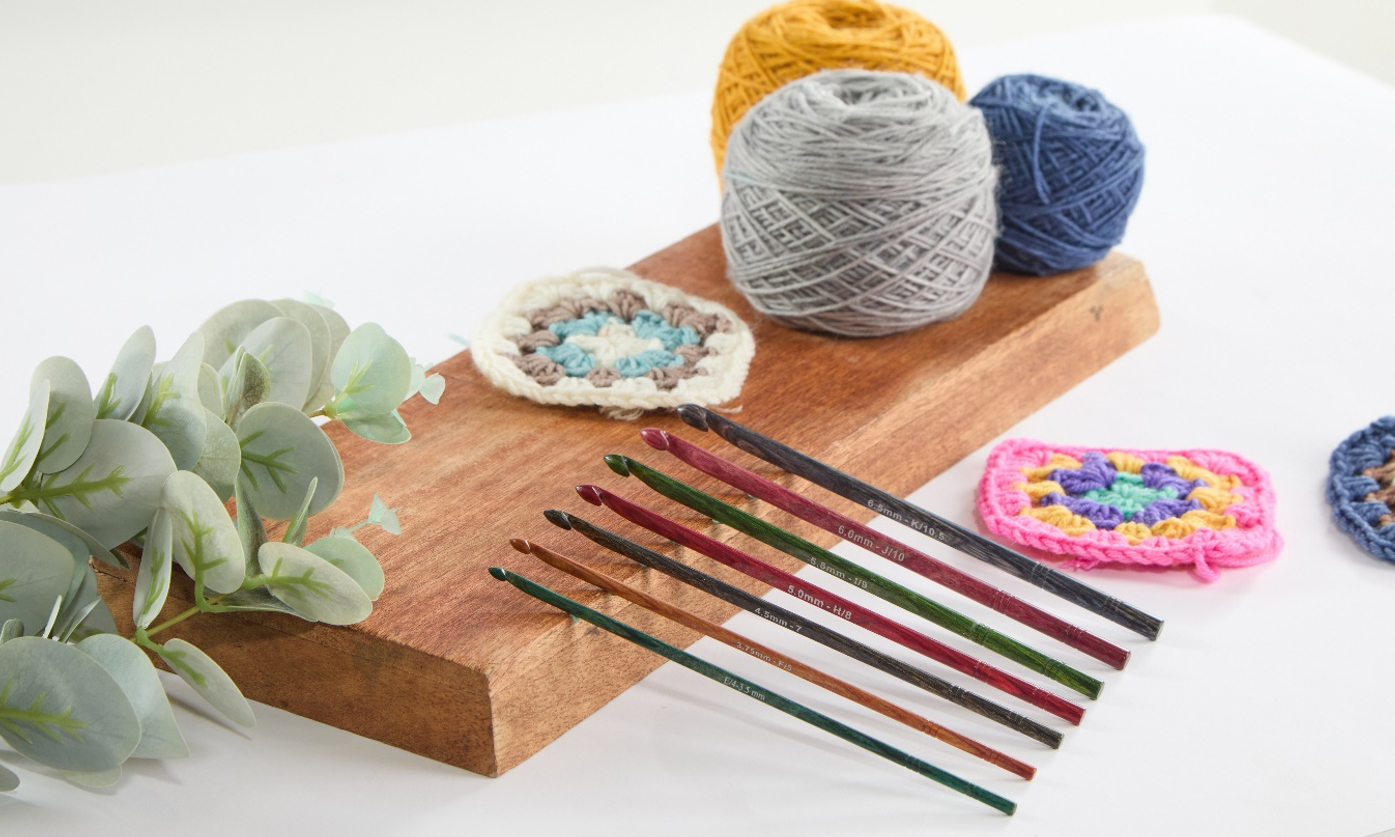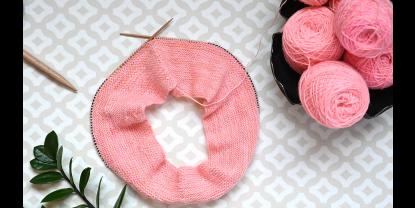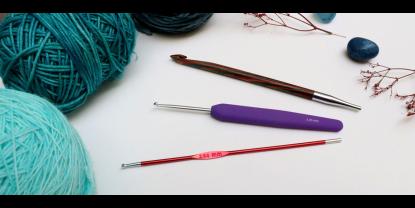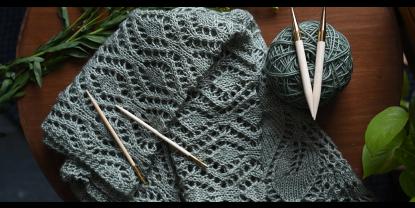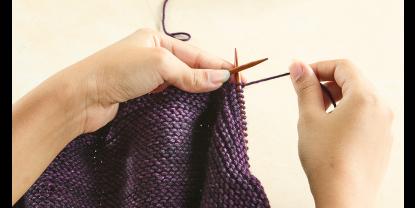Granny squares are classic designs that lay the foundation for many crochet projects. Whether you have a single-ended crochet hook or scraps of yarn, want to practice crochet, or plan a vast project such as blankets, a summer dress, a bag, or home decor, the granny squares tick all the boxes. Most beginners pick up how to crochet a classic granny square as soon as they learn the basic crochet stitches. for many crocheters. Simple, satisfying, and versatile, however, they’re just the beginning. If you’re ready to go beyond and expand your crochet skills, we’ll introduce you to five crochet techniques in this blog.
1. Magic Circle (or Magic Ring)
A handy technique to begin a project in a circle, Amigurumi, coasters, mandals, top-down hats, or even creative granny squares. The magic ring is also practical for crocheting a granny square.
If you've ever crocheted a circle and ended up with a hole in the middle, the magic circle is about to become your new best friend. Instead of chaining a few stitches and joining them to form a loop, the magic circle allows you to crochet directly into an adjustable loop. The beauty of the magic circle is that you can pull it tight to close the center of your round completely. No more awkward holes in the middle of your project! It gives a cleaner, more professional finish, especially for tightly stitched items like stuffed toys or closed motifs.
2. Front Loop Only (FLO) and Back Loop Only (BLO)
The Front Loop Only (FLO) and Back Loop Only (BLO) techniques are powerful tools for adding texture and stretch to your crochet fabric. Normally, a stitch is worked under both the front and back loops of the previous row or round. However, FLO means inserting your hook only under the front loop (the one closest to you). BLO means inserting the hook under the back loop (the one farther away from you).
Both techniques can be used in combination to create interesting textures and patterns in your work that are very subtle. They’re simple to execute but dramatically expand your creative options. BLO creates a ribbed effect that’s stretchy and perfect for cuffs, beanies, and garments where flexibility matters. FLO gives a flatter texture but allows the back loop to pop up, adding visual detail.
3. Tapestry Crochet
Ready to bring color into your stitches without having to switch skeins every few inches? Tapestry crochet is the way to go. The technique involves carrying one or more yarn colors along while you work and switching between them to create colorful patterns or motifs. Unlike intarsia or fair isle colorwork, the unused yarn is crocheted over and hidden inside the stitches of the working color. Refer to our complete guide to tapestry crochet.
This technique lets you crochet detailed images, geometric designs, or even text into your fabric, without cutting and rejoining yarn every few stitches. It’s perfect for graphic bags, pillow covers, and wall hangings. And yes, it works best with tight stitches like single crochet to prevent the carried yarn from peeking through.
4. Surface Slip Stitch
Think of this as drawing or doodling on crochet fabric, with your hook and yarn. The slip stitch in crochet comes in handy for various purposes. Surface slip stitch is a technique where you crochet slip stitches on top of an already finished piece. You insert your hook into the surface of the fabric, pull up a loop with a new yarn color, and then slip stitch along your chosen path.
This technique is perfect for adding outlines or borders, writing names or lettering and creating faux seams or embellishments. It’s like embroidery, but all done with your crochet hook!
5. Crochet Cables
Yes, cables aren’t just for knitting! You can create twisty, braided textures with crochet, too. Crochet cables are made using post stitches like front post double crochet (FPdc) or back post double crochet (BPdc). Refer to our guide on crochet post stitches. The technique is simple yet effective, as you instead of inserting your hook through the top loops of a stitch, you work around the post (the vertical body of the stitch). By skipping and crossing stitches, you can create cable patterns that look just like those in knitting. Cables add rich, 3D texture to scarves, sweaters, pillows, or blankets.
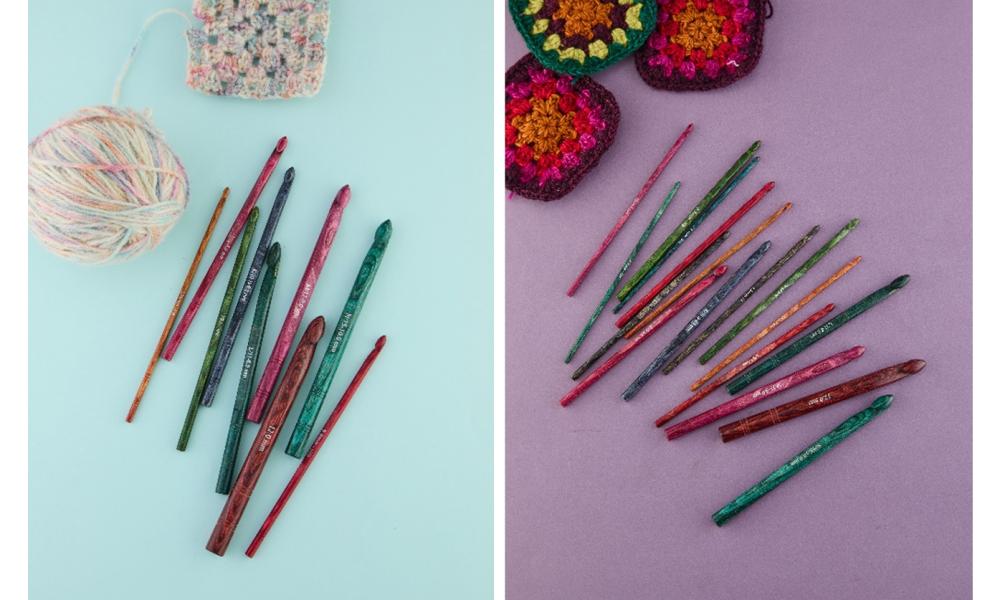
While they may seem a bit advanced at first, once you understand post stitches and how to read a cable pattern, they become incredibly rewarding to use.
So, get ready to expand your skills; these techniques are a great place to start. The best part? You don’t need to buy special tools to try them, just grab your favorite crochet hook and yarn, and start experimenting! Check out the KnitPro crochet hooks and sets. Waves 2.0 has ergonomic rubber handles that have a comfortable grip. Dreamz and Ginger hook offer wooden needles. Zing has a vibrant color selection in smooth aluminium. Oasis is one-of-a-kind with single-ended interchangeable crochet hooks. Explore our guide on crochet hooks, which to choose and when. Comfortable, beautiful tools can make learning new techniques even more enjoyable.


